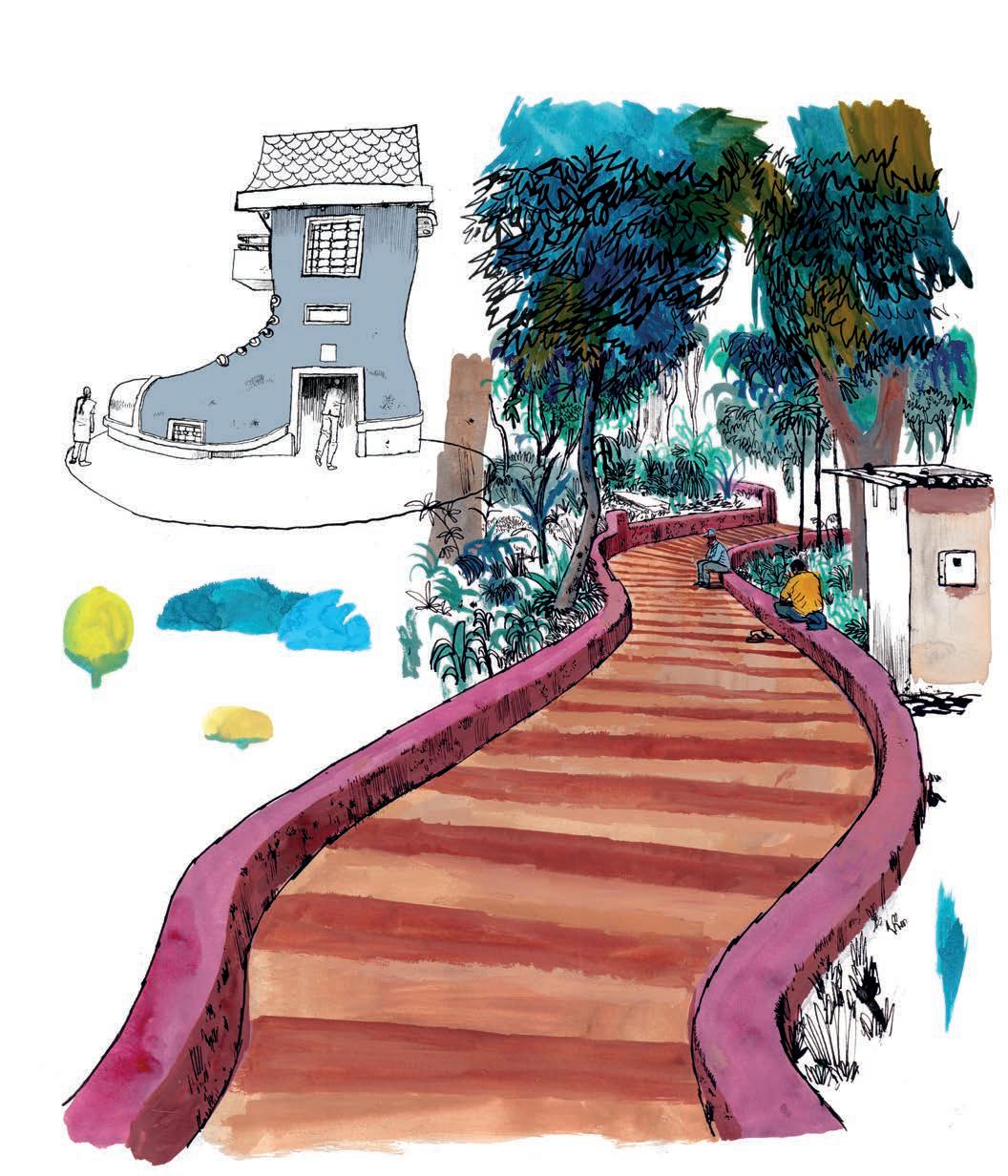


“The early history of our Island of Bombay is sunk deep in the Night of Time. At intervals the light of antiquarian research casts a faint beam upon the darkness; a coin, an inscription, perchance a copperplate grant or patent, is discovered, and published as evidence that some old dynasty was paramount in Aparanta (the term used by Sanskrit writers for the North Konkan) during remote ages. But lack of material has ever been a stumbling block in the path of him who would give to the world a connected tale of the island’s expansion. Scattered notes, wherein evidence of prehistoric trade routes is confusedly mingled with the description of events occurring in Christian eras, are all that exist to throw light upon the early circumstances of Bombay.”
– S.M. Edwardes


While everyone knows that the Gateway of India was built to commemorate King George V’s visit to British India, what is less known is that the emperor walked past a cardboard representation of the real thing.
Conceptualised in 1911 by famed Scottish architect George Wittet, the Gateway of India was meant to commemorate the arrival of King-Emperor George V and Queen-Empress Mary in India. It was meant to resemble the Arc de Triomphe, and yet it was also intended to be the hybrid representation of a globalised world. Incorporating elements of 16th-century Indo-Saracenic architecture from Gujarat, like the exquisite jaali work crafted in stone, the structure would be built from locally sourced basalt.
All this sounded great on paper, but therein lies a tale: so overwhelmed was the team with the enterprise that by the time King George arrived in 1914, what greeted him was a cardboard façade. The actual construction only began in 1915 and took 10 years to complete. That said, Wittit, the handsome Scot, left behind a blazing legacy of passion across the city: the Prince of Wales Museum, the Institute of Science, Bombay House, Sir J.J. College of Architecture and the Grand Hotel at Ballard Estate.




The history of the Asiatic Library and the Town Hall is a fascinating one, interwoven with the growth and development of Mumbai itself. The idea for the library was first conceived in 1804 by Sir James Mackintosh, a Scottish jurist and philosopher who envisioned a space where the city’s intelligentsia could gather to exchange ideas and knowledge. The Literary Society of Bombay was thus formed, and its collection of books became the foundation of the Asiatic Library. As the society grew, so did the need for a permanent home. In 1830, the society merged with the Royal Asiatic Society, and plans were made to construct a grand building that would serve as both a library and a cultural centre. The Town Hall, designed by Colonel Thomas Cowper and completed in 1833, became the iconic structure that we know today.
“Legends abound about the Asiatic Society. One of my favourites is that Mussolini wanted to buy a copy of Dante’s Inferno from our prized collection and had offered £1 million for it in 1940. On the more regular side of things, in the good old days, we used to send out books in trunks. Members could literally order books by the ‘trunk-load’ to sate their voracious appetite for reading. And we also had a very democratic process of picking members. Their names would be put up on a board. And if someone disapproved of their company in our esteemed library, they could literally black-ball them.”
– Shehernaz Nalwalla Vice-President of the Asiatic Society of Mumbai



















